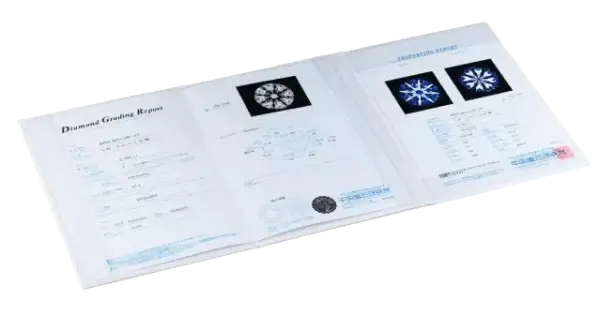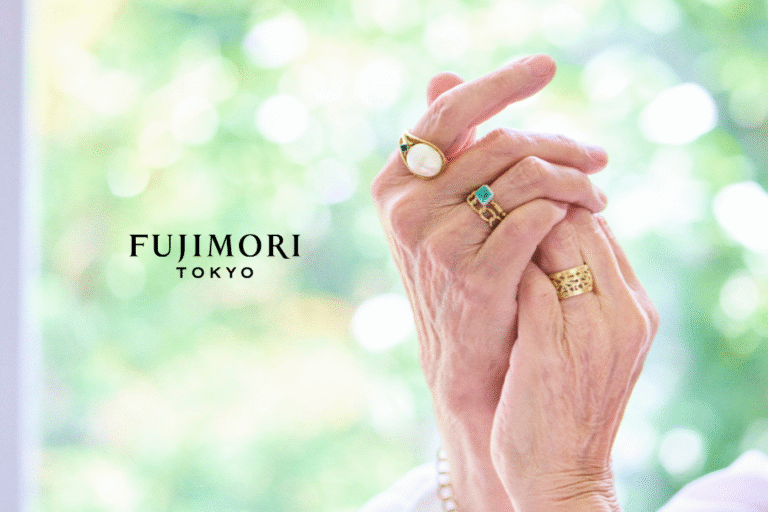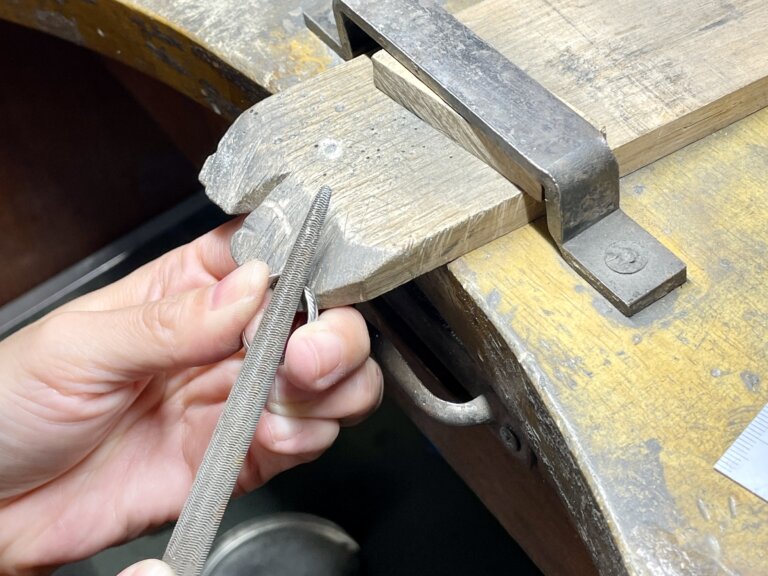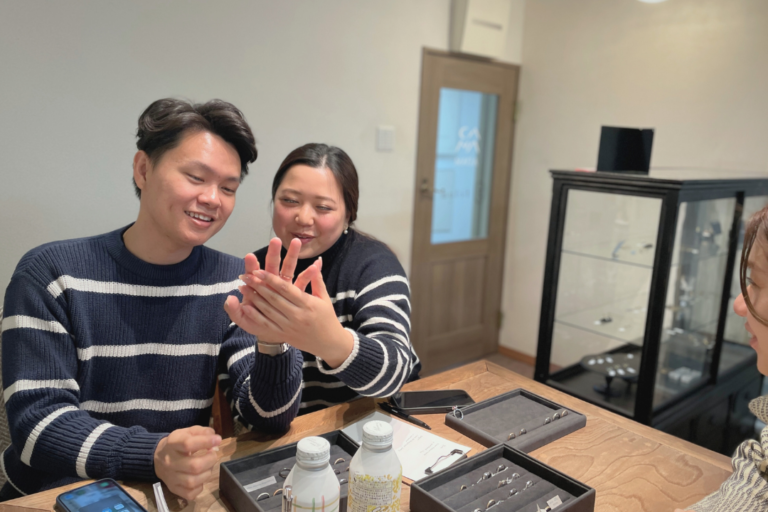Diamonds are the most important part of a ring. Diamonds vary widely in price depending on their size and grade, and many people wonder which diamond is best suited for them. In this article, ADAM, which has been making engagement rings in Sangenjaya for more than 50 years, will share its know-how on how to choose a diamond that is cost-effective and within your budget, while still maintaining the beauty of its appearance.
Diamond Basics
Let's begin with a breakdown of diamond grades. Diamonds are graded based on four factors known as the "4Cs of diamonds": Carat, Color, Clarity, and Cut.
Carat
It is a unit of measurement for diamond weight, and one carat is equivalent to 0.2 grams. The larger the carat, the rarer the diamond, and the greater the diamond's presence, which of course translates into a higher price.
Because carat is the most easily understood of the important diamond evaluation criteria, people generally tend to focus on carat, but it is important to evaluate it comprehensively in conjunction with the other 3Cs (color, clarity, and cut).
Color
Evaluates the clarity of a diamond's color.
The GIA (Gemological Institute of America) color grading system ranges from D to Z. D is the most colorless, and the closer to Z, the more yellowish the color becomes.
Clarity
Evaluate the diamond's transparency and internal and external defects (inclusions and blemishes).
Clarity is evaluated by the size, number, location, and type of defects and is ranked on an 11-point scale from FL (flawless) to I3 (inclined). The fewer the defects and the higher the clarity, the higher the value.
Cut
Evaluates the quality of the diamond's shape and finish.
A rough diamond that has just been dug out of the ground does not shine at all, just like a "mere pebble. It is only when the rough diamond is processed (cut) to make it shine beautifully that the diamond takes on that brilliance.
The ideal cut reflects light efficiently and creates a beautiful sparkle, which is graded by GIA on a scale of excellent to poor. The better the cut, the more beautiful and brilliant the diamond.
How to choose a diamond that is beautiful to the eye
You can choose diamonds based on grade supremacy, but of course the result will bounce directly off the price tag.
At ADAM, we place the utmost importance on the "visual beauty" of the diamond when selecting a diamond.
The requirement for a diamond that is beautiful to the eye does not necessarily mean that it is rated high in all 4Cs, which means that it is also expensive.
ADAM, as a long-established atelier, proposes a diamond selection process that truly considers the customer and does not place too much emphasis on grade alone.
Cut is not compromised.
When selecting a diamond for an engagement ring, the most important factor to consider is the "cut.
When the gemstone is precisely and precisely brilliantly cut, it shines more strongly and more beautifully than any other gemstone because of its exceptional refractive index. This is because the closer to the ideal cut and proportions, the more brilliant the gemstone will be. Conversely, if the cut is not good, the diamond will not shine as beautifully, even if other elements are excellent.
For engagement ring diamonds, we recommend "Very Good" or better, but we still recommend "Excellent".
The cut is recommended to be the highest grade triple excellent Heart & Cupid (3EX H&C)!
A heart and cupid is a diamond with excellent proportions and symmetry that, when viewed with a special loupe, reveals eight "heart" and "arrow" shapes. They are called "hearts and cupid (H&C)," referring to the story of the angel of love (Cupid) shooting the heart. It is a very rare and valuable diamond.
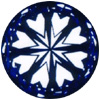
Eight Hearts
Bottom view
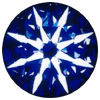
Eight arrows.
Top view
Next, let's look at a good "color" diamond.
The diamonds clamped in the ring are well lit, so their quality can be seen with the naked eye.
Among them, "Color" can be easily identified by comparison whether it is colorless and transparent or yellowish.
So, next to cut, color is the most important factor to consider when selecting a diamond. For engagement rings, we recommend that you choose a diamond with a grade of at least [G/H].
Clarity" is the minimum grade required.
Perhaps the most important point in ADAM's diamond selection policy is the way in which the grade of "clarity" is perceived.
Many bridal ring specialty stores tend to emphasize the importance of clarity, for example, "Miraculous IF class" or "Only VVS or higher is used,
ADAM does not consider clarity grade to be particularly important, only what flaws (inclusions) are present and in what locations.
When it comes to engagement rings, the phrase "flawless" tends to attract people, but grades such as IF and VVS are for the world of microscopes, and the most important thing is "beauty that can be seen with the eyes" (the most important factor in diamonds). In terms of value, "inclusions that are difficult to detect under 10 times magnification" is sufficient for the [VS] class, and if there is no problem with the location of flaws, the [SI] class will not have a significant impact on the beauty of the diamond.
If you have a budget to spare, a higher grade is even better, but compared to VS, VVS is about 1.5 times more expensive even though the cut and color grades are the same.
ADAM recommends that you decide to choose a VS 0.5 ct diamond, which is about the same price as a VVS 0.3 ct or so, and has about the same visual beauty.
VVS1-VVS2: Minute inclusions that are very difficult to detect under 10x magnification
VS1-VS2: Inclusions difficult to detect under 10x magnification
SI1-SI2: Easy to detect with 10x magnification, difficult with naked eye
I1-I3: Inclusions easily detected by the naked eye
Then, select a diamond with a "carat weight" that fits your budget.
0.1 ct.
Diameter 3.0mm
0.2 ct.
Diameter 3.8mm
0.3ct
Diameter 4.4mm
0.4ct
Diameter 4.8mm
0.5 ct.
Diameter 5.1mm
0.7ct
Diameter 5.8mm
1.0 ct.
Diameter 6.5mm
The minimum requirements for selecting diamonds are "Cut" and "Color" grade,
Choose the largest "carat" diamond possible to fit your budget.
However, it is unwise to prioritize carat weight and lower cut and color grades just because the bigger the more powerful.
Bigger is not always better, and since it is also compatible with the size of the hand, ADAM believes that a diamond as large as 0.3 ct. is sufficient for an engagement ring, as long as it is a beautiful diamond.
summary
We recommend that you consider "Cut" and "Color" in order of priority, and finally decide on the carat that best fits your budget and your image.
What diamonds do you recommend for each budget?
Here are some specific examples of diamond selections we recommend for different budgets.
These are examples of diamonds carefully selected based on ADAM's diamond selection policy to date.
The prices in your budget below are for the cost of loose diamonds.
The total of the following loose price and the processing fee for the ring itself will be the final engagement ring price.
Reference Price of Loose Diamonds
0.2 ct.
Around 100,000 yen
Color: D/Clarity: VS1/Cut: 3EX H&C
0.3ct
Around 200,000 yen
Color: D/Clarity: VS1/Cut: 3EX H&C
0.4ct
Around 300,000 yen
Color: E/Clarity: VS2/Cut: 3EX H&C
0.5 ct.
Around 400,000 yen
Color: E/Clarity: VS2/Cut: 3EX H&C
How about ADAM's recommendation on how to choose a diamond? We hope it will be of some help to you in your diamond selection.
At ADAM, we have samples of typical grades of diamonds. If you visit our store and actually hold them in your hands, you will be able to better understand the differences in size and grade. Please feel free to visit us first.
All graded diamonds purchased at ADAM are accompanied by a certificate of authenticity from the Central Gemological Laboratory.
